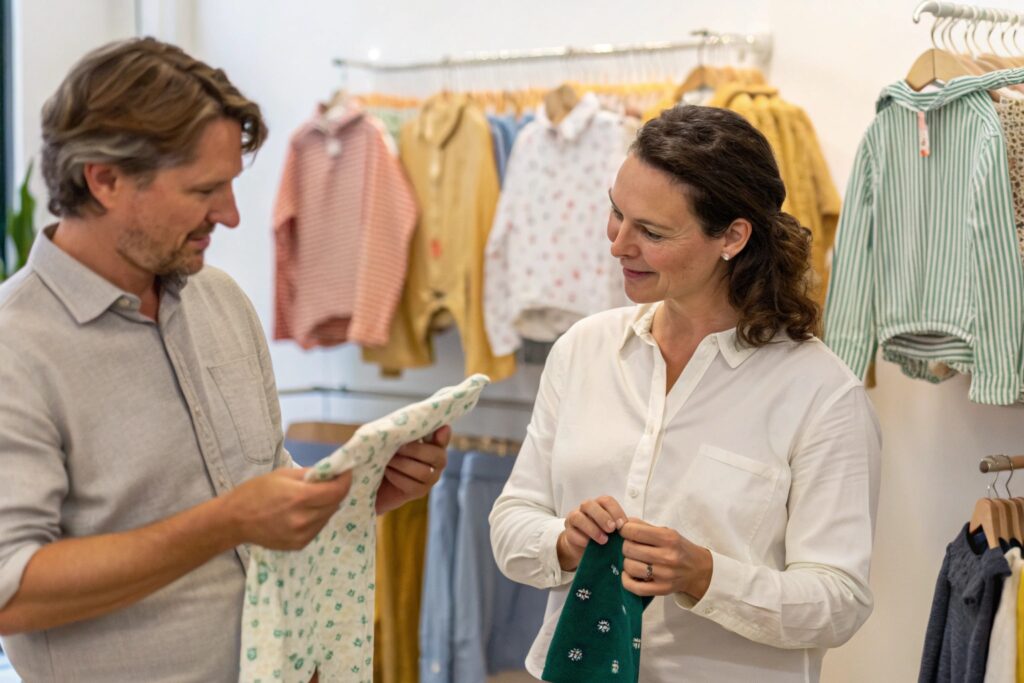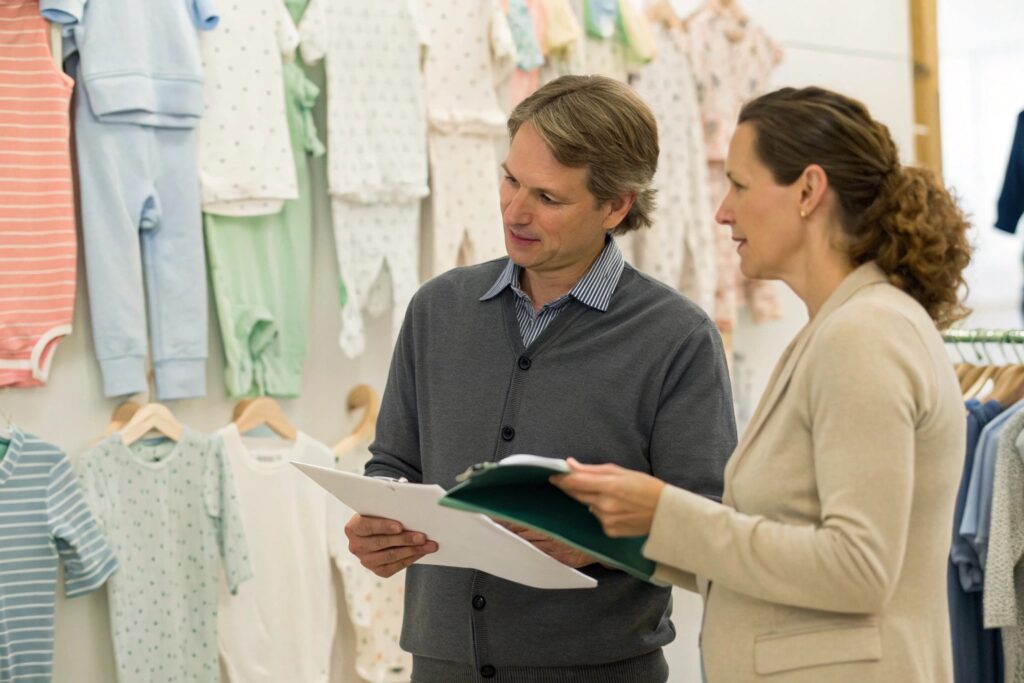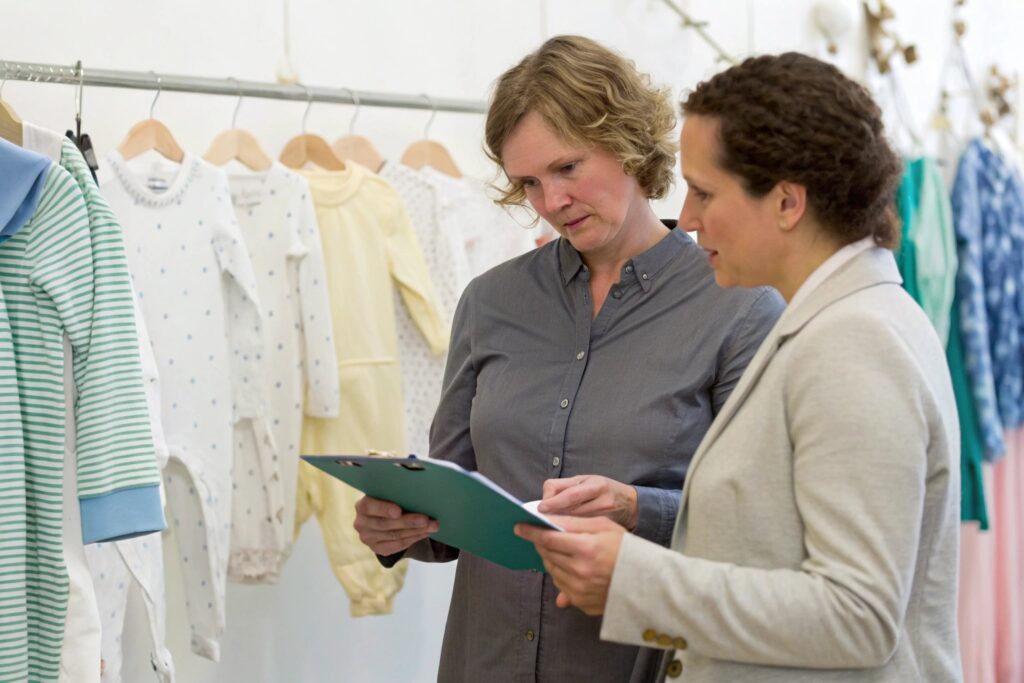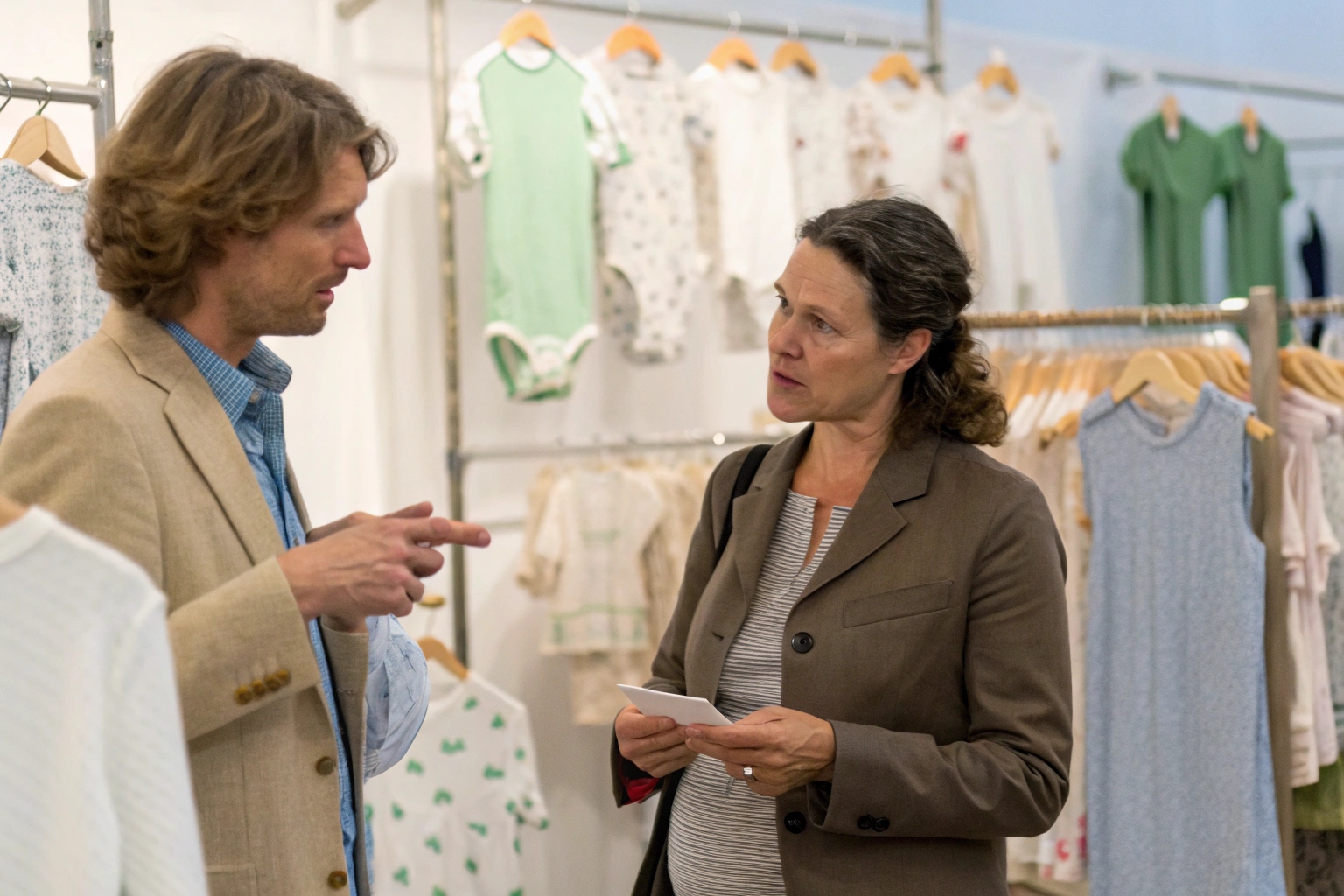As more parents seek eco-friendly clothing for their children, brands are under pressure to deliver garments that are both sustainable and safe.
Yes, sustainable materials like organic cotton, bamboo, and recycled fibers can meet babywear safety standards—when tested and certified through proper channels.
Let’s explore how green fabrics hold up to global safety rules and how brands can prove both sustainability and compliance.
What Eco-Friendly Fabrics Are Safe for Babies?
Sustainability starts with the fabric—and when it comes to babies, that fabric must also be soft, breathable, and free from harmful chemicals.
The most common eco-friendly fabrics used in babywear—like organic cotton, bamboo viscose, and TENCEL™—are not only sustainable but also skin-safe when properly processed.

Baby-safe sustainable fabric options:
| Fabric Type | Sustainable Feature | Baby Safety Benefit |
|---|---|---|
| Organic Cotton | Grown without pesticides or GMOs | Naturally hypoallergenic, soft on skin |
| Bamboo Viscose | Fast-growing crop, water-efficient | Breathable, smooth, and moisture-wicking |
| TENCEL™ (Lyocell) | Made from FSC-certified wood pulp | Gentle, breathable, low environmental impact |
| Recycled Cotton | Reuses waste from textile mills | Requires certification to ensure safety |
| Recycled Polyester (rPET) | Diverts plastic from landfills | Best used in outerwear; must pass safety tests |
These fabrics are popular in eco-conscious babywear lines for swaddles, rompers, pajamas, and accessories. But raw material alone doesn’t guarantee safety.
How Sustainable Materials Are Tested for Babywear Compliance?
Eco-friendly claims are one thing—but safety testing ensures the fabric is truly suitable for babies.
Sustainable babywear materials are tested for chemical safety, physical performance, and compliance with region-specific regulations like CPSIA (USA) and REACH (EU).

Key safety tests for eco-materials:
| Test Type | Why It Matters |
|---|---|
| Formaldehyde content test | Confirms absence of harmful finishing agents |
| Heavy metal detection | Verifies dyes and trims are non-toxic |
| pH and allergen testing | Ensures fabric is skin-neutral and safe |
| Colorfastness to saliva/sweat | Prevents bleeding and irritation |
| Shrinkage and durability | Confirms sizing and long-term usability |
At Fumao, we test all eco-fabrics for both environmental and babywear compliance, using third-party labs like SGS or Intertek when required by clients.
No matter how sustainable the source, the fabric must still pass all the same health and performance criteria as conventional textiles.
Do Organic and Recycled Fibers Pass Global Safety Standards?
Many brands worry that alternative fibers won’t meet import laws or safety benchmarks—but with the right process, they can.
Yes, organic and recycled fibers can pass global babywear safety standards like OEKO-TEX®, GOTS, CPSIA, and EN 14682—when sourced and certified properly.

How these materials meet safety standards:
| Fiber Type | Certification Pathway | Use in Babywear |
|---|---|---|
| Organic Cotton | GOTS, OEKO-TEX® Standard 100 | Widely used in newborn clothing and blankets |
| Bamboo Viscose | OEKO-TEX®, FSC-certified pulp source | Pajamas, bodysuits, swaddles |
| Recycled Cotton | Global Recycled Standard (GRS), OEKO-TEX® | Better for accessories and toddlerwear |
| Recycled Polyester | GRS, CPSIA lab testing required | Safe for outerwear if fully certified |
The key is that all processing and finishing steps—not just the base fiber—must meet safety regulations.
That includes:
- Non-toxic dyes
- Safe softening agents
- Trim and label compliance
- Proper care labeling
- CPSIA tracking labels (for U.S. entry)
Certifications That Verify Both Sustainability and Safety?
To truly verify that your babywear is both eco-friendly and safe, you need certifications that cover the entire product lifecycle—not just raw material sourcing.
Certifications like GOTS, OEKO-TEX®, and GRS confirm that fabrics are sustainably produced, tested for safety, and suitable for infant use.

Dual-certification programs to know:
| Certification | Covers Sustainability | Covers Safety | Notes |
|---|---|---|---|
| GOTS | ✅ Organic farming + ethical production | ✅ Chemical restrictions + social audits | Covers fiber, processing, packaging |
| OEKO-TEX® 100 | ❌ (focus is chemical safety) | ✅ Skin safety and non-toxicity | Verifies final product safety |
| GRS (Global Recycled Standard) | ✅ Recycled material origin | ✅ If OEKO-TEX® tested post-production | Needed for rPET and recycled cotton |
| CPSIA (U.S.) | ❌ (legal compliance only) | ✅ Lead, phthalates, labeling | Mandatory for U.S. babywear |
| REACH (EU) | ❌ (focus on substances) | ✅ Chemical safety for Europe | Regulates dye/chemical use |
Smart brands use multiple certifications to cover both the “green” and the “safe.” This builds trust with parents, retailers, and regulatory authorities.
At Fumao, we offer GOTS-certified babywear, OEKO-TEX®-tested bamboo blends, and GRS-certified recycled items—along with full documentation for customs and resellers.
Conclusion
Sustainable materials can absolutely meet babywear safety standards—if properly sourced, tested, and certified. Parents want comfort, care, and conscience in one product. With the right fabric choices and verification, brands can deliver all three—without compromise.










